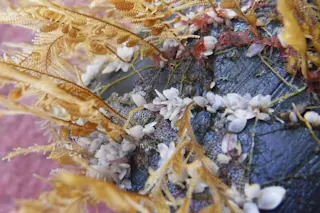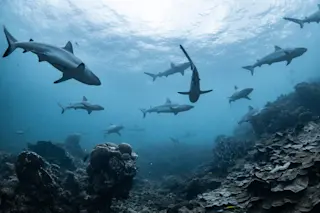The mouth of the Amazon River. (Credit: Wikimedia) A hidden coral reef roughly the size of Delaware was discovered at the mouth of the Amazon River. It was a pleasant surprise for scientists, but the reef is already facing threats. The reef occupies about 3,600 square miles off the shore of northern Brazil and French Guiana, and is hidden under sediment that spills from the Amazon into the Atlantic Ocean. The find came as a surprise to researchers, who say that the combination of mud and fresh water dumped into the ocean by the Amazon should create near-inhospitable conditions for the fragile coral. By studying samples dredged up from reef, some of which likely represent new species, the researchers hope to learn how corals survive adverse conditions. In all, researchers found 73 species of fish, 61 species of sponge and many other aquatic denizens unique to coral reefs. The researchers ...
The Good and Bad News About the Amazon River's Hidden Reef
Discover the Amazon River coral reef, a hidden gem facing threats yet thriving in challenging conditions. Insights on coral survival await!
More on Discover
Stay Curious
SubscribeTo The Magazine
Save up to 40% off the cover price when you subscribe to Discover magazine.
Subscribe













